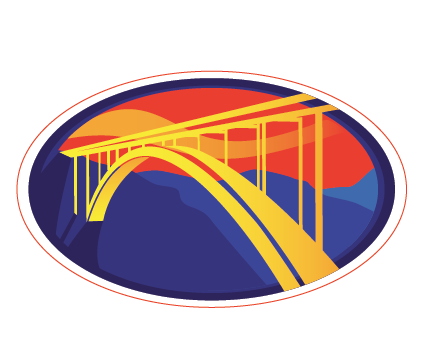White Water Rafting, Or White Water Swimming?
Well, in the New River Gorge, one doesn't necessarily include the other. Thousands and thousands of people every year go white water rafting down the New River. It's one of the most popular raft trips in the world, especially on Bridge Day, and for good reason. The rapids of the New are a perfect mix of big waves and technical manuveurs, adn depending on the water level, perfect for just about everyone.
You don't even have to know how to swim. It's unbelievable but true. Most people would not believe the number of rafters that go down the river that do not know how to swim. Hey, that's what the life jacket is for. Actually, we can't say "life jacket"; the correct term is "personal floatation device". Go figure.
Anyway, that's why they call it white water rafting and not white water swimming, right? People fall out of the rafts, but then they get scooped right back up and continue on downstream.
Now, an entirely different kind of white water swimming takes place on Bridge Day. BASE jumpers leave the bridge, free fall, then throw their chutes and maneuver a descent to the landing zone below.
In theory.
There's a whole lot that can go on between the time that chute opens and the time a jumper comes in to land. And that, my friends, in addition to a whole load of other wonderful stuff, is what makes Bridge Day awesome.
Basically, jumpers have to choose between landing in the landing zone, or landing in the river. Wait. Actually, they have to choose between landing in the landing zone and landing in the river and landing in the rocks and landing in the trees and landing in the railroad tracks. Life is full of choices.
But for simplicity's sake, let's just say some poor BASE jumper is about to land in the water. They actually have a lot going for them.
Any BASE jumper will tell you that the sure fire, absolute, 100% softest landing you can make on Bridge Day is in the water. It's actually encouraged for some people who are making their first few jumps. The bridge is positioned directly between two rapids, Fayette Station, which is Class IV, and Flea Flicker, which is Class III. If a jumper lands in the water, it's not going to be in a rapid, but rather, between them. Pretty much.
That doesn't mean there's not current. There's enough power in the water to get thing moving fast. So the Bridge Day rescue team is on hand in the pool below the bridge. If you've never had a chance to see these guys and girls in action, do yourself a favor and check it out. They're amazing.
What happens is this: A jumper lands in the water. The boats have already predetermined where the jumper will touch down (or, touch in, as the case may be), and are there within moments of the first signs of dampness. Through hand signals, radios, and, um, mating calls, the boats drop off the rescued jumpers at the bank and then reposition themselves for the next water landing.
Pretty cool, huh?
So, to sum up, there's whitewater rafting swimming, and there's whitewater BASE jumping swimming. You're almost guaranteed to witness both at Bridge Day 2010. It's going to be fun.

